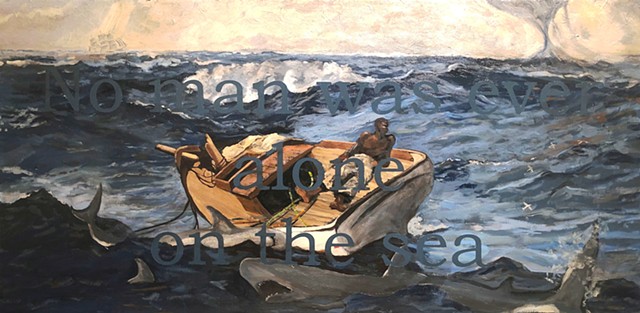Winslow Homer was preoccupied with the power of the ocean, and often made it the subject of his art. The Gulf Stream, 1899, is named after the strong Atlantic current that connected many of the locales where he liked to paint. Homer based this dramatic scene of imminent disaster on sketches and watercolors he had made during winter trips to the Bahamas in 1884 and 1898, after crossing the Gulf Stream several times. A man faces his demise on a dismasted, rudderless fishing boat, sustained by only a few stalks of sugarcane, while threatened by sharks and a distant waterspout. He is oblivious to the schooner on the left horizon, which Homer later added to the composition as a sign of hopeful rescue. The phrase, “No man was ever alone on the sea” comes from Ernest Hemingway’s Old Man and the Sea.
Private Collection
